
views
Labeling Specific Angles
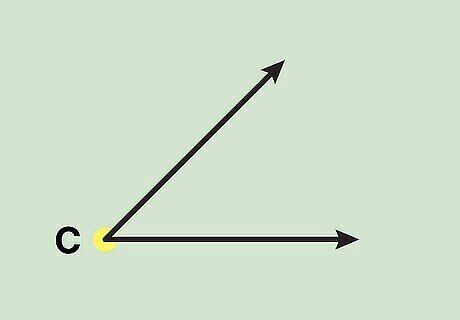
Identify the vertex of the angle. The vertex is the point where the two line segments or rays of the angle meet. If you are looking at an angle in a math book or worksheet, this point is likely already labeled. If you are drawing your own angle, you can label this point using any letter. For example, you might have an angle with a vertex at point C.
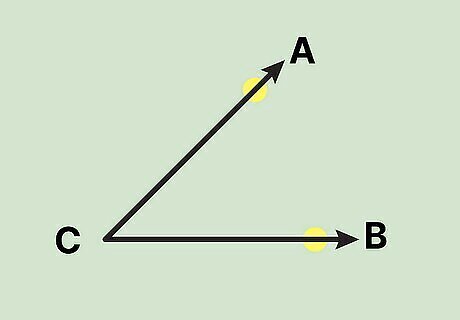
Identify one point on each line segment or ray. Usually these points are plotted near the end of the line or ray. Again, these will likely be labeled for you, but if you are creating the angle, you can label them however you like. For example, on the top ray of the angle, you might have point A. On the bottom ray of the angle, you might have point B.
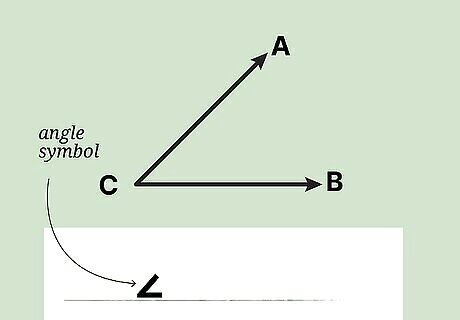
Draw the angle symbol. This is simply a small representation of an angle ( ∠ {\displaystyle \angle } \angle ). Using this symbol will help differentiate an angle from a triangle the angle might be a part of.

Label the angle using the vertex and the two points. The convention is that the vertex point is the middle letter in the angle label. So, if you are reading the name of an angle, you generally read it from the point on the top ray, to the vertex, to the point on the bottom ray. For example, an angle with a vertex C, and a point A on the top ray, and the point B on the bottom ray, would be labeled ∠ A C B {\displaystyle \angle ACB} \angle ACB.
Classifying Angles

Measure the angle. If the angle's measurement is not already given, you need to measure it using a protractor. Angles are classified by their size, and so before you can classify the angle, you need to know its degree measurement.

Identify right angles. A right angle is created by two perpendicular lines or rays and is exactly 90 degrees. Right angles are often shown by a box in the corner of the angle.

Identify acute angles. Acute angles are less than 90 degrees (that is, 0 to 89 degrees.) Many people remember the term for an acute angle, because these angles are small, and so you can say to yourself, “My, what a cute little angle!” There is no symbol that denotes an acute angle; the only way to know if an angle is acute is if you measure it, or if the measurement is given. For example, ∠ D E F {\displaystyle \angle DEF} \angle DEF measures 40 degrees. Since 40 is less than 90, it is an acute angle.
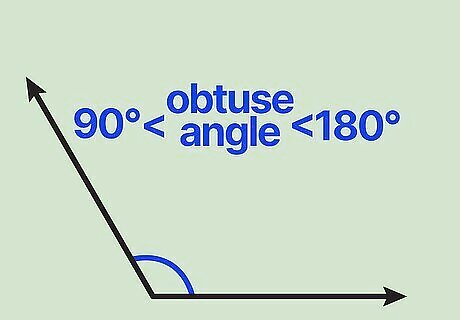
Identify obtuse angles. Obtuse angles are between 90 and 180 degrees (that is, 91 to 179 degrees). You can remember the term for an obtuse angle by linking the word “obtuse” with “obese,” since obtuse angles are larger than acute and right angles. There is no symbol that denotes an obtuse angle. For example, ∠ I H J {\displaystyle \angle IHJ} \angle IHJ measures 125 degrees. Since 125 is between 90 and 180, it is an obtuse angle.
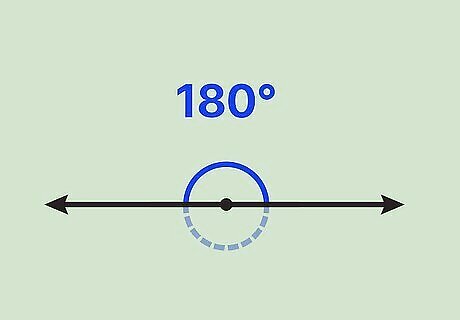
Identify straight angles. A straight angle is a straight line. It measures exactly 180 degrees. Note that 180 is half of 360, which is the measurement of a complete turn, or circle. So a straight angle is an angle that is open exactly halfway.
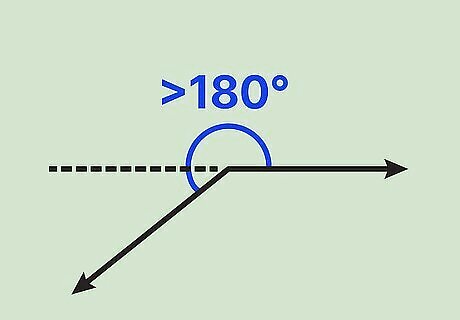
Identify a reflex angle. A reflex angle is an angle that is greater than 180 degrees. You need to be careful when identifying these types of angles, because they can look like acute or obtuse angles. Think of an angle opening to a complete rotation. When it is open half way, it is a straight angle. If the angle opens beyond that, it is a reflex angle. Take, for example, a right angle. A right angle really makes two angles. One is the 90 degree angle inside the square corner. However, if you think of the angle opening the opposite way, you can see that it could also makes a 270 degree angle.
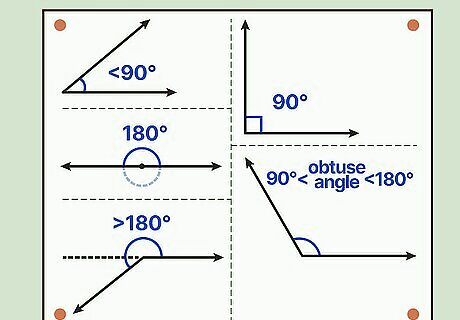
Get help. If you are struggling with angles, don't be afraid to ask your teacher for additional instruction. If your teacher is unavailable, he or she will likely have an anchor chart in the classroom that describes the type of angles and shows examples of them. If not, your textbook will explain these, and you can always look for more information online. If you still struggle with angles, you might need to find a tutor. Some good online resources include Math is Fun and Khan Academy. To find a tutor, speak to your school counselor. You can also find a tutor online through sites like WyzAnt and Varsity Tutors.












Comments
0 comment